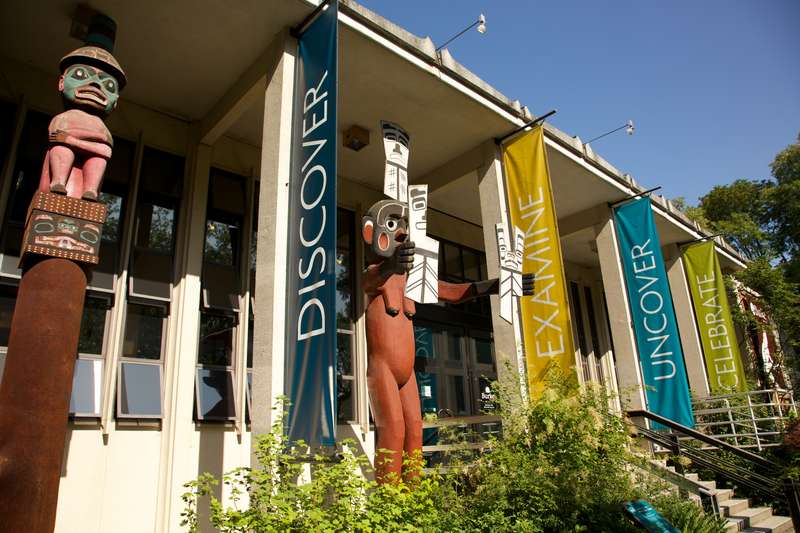8,500 Year Old Kennewick Man Definitely Native American; Scientists Want to Know More
 The “Ancient One,” aka the 8,500 year old Kennewick Man, is related to modern Native Americans after all, according to a recent DNA analysis published in Nature.
The “Ancient One,” aka the 8,500 year old Kennewick Man, is related to modern Native Americans after all, according to a recent DNA analysis published in Nature.
“The Kennewick paper is exciting and impressive,” Harvard University Medical School geneticist David Reich, Ph.D., told Bioscience Technology. Reich was uninvolved with the current study. “It shows convincingly that Kennewick is a member of the same broad population as most present-day Native Americans.”
But only one present-day Native American tribe offered its DNA for comparison. It is, Reich said, “unfortunately difficult to say anything precise about the affiliation of Kennewick to specific present-day Native American tribes, given that there is so little comparison data available. It would be exciting if more Native American individuals would volunteer to contribute their DNA for genomic studies. That would make it possible to say something more confident about the affiliations of ancient Native Americans—Kennewick and others—to present day peoples.”
Still, the biggest part of the “huge controversy” over this skeleton, the subject of a lawsuit, is over, said senior author University of Copenhagen geneticist Eske Willerslev, Ph.D., in a presser on Wednesday. The controversy began when five Native American groups indicated they did not want the remains’ DNA analyzed for religious reasons: they believed the “Ancient One” was one of their own.
Eight top scientists sued the remains’ caretakers, the US Army Corps of Engineers, saying DNA proof was needed. Among other things, the scientists thought the man may be Caucasian, as the skull did not look Native American. Carbon dating by a local archaeologist had proven he was one of the oldest North American skeletons ever found. But far more extensive analysis, including DNA analysis, was needed for origin. The courts, years ago, agreed.
Read More: The Ancient One: Kennewick Man Linked to Native Americans Through DNA
“It is kind of ironic,” said Willerslev, leader of the international team that did the analysis. In the end, the Native Americans were proven right: Kennewick man, one of the few well-preserved North American ancient skeletons in history, was one of theirs, after all.
Early tests suggested alternate migration
The skull of Kennewick Man was found in 1996 in the Columbia River near Kennewick, Washington by a couple of college students. Police thought it was a murder, but after the skeleton was unearthed and given some initial testing, it was clear this was an ancient find.
Groups that gathered to examine morphology at the time decided the skeleton did not appear to be Native American. It seemed more closely related to other Pacific groups, like the Japanese Ainu, and Polynesians. Speculation even flew that it was Caucasian.
 Five Columbia River Basin Indian tribes stepped in to claim the remains for repatriation under the Native American Graves Protection and Repatriation Act (NAGPRA). Among other things, the tribes said they believed the Kennewick Man was Native American. They wanted to bury the remains, as they were, in a secret location, safe from science.
Five Columbia River Basin Indian tribes stepped in to claim the remains for repatriation under the Native American Graves Protection and Repatriation Act (NAGPRA). Among other things, the tribes said they believed the Kennewick Man was Native American. They wanted to bury the remains, as they were, in a secret location, safe from science.
When the US Army Corps of Engineers, after public hearings, said it would grant the tribes’ request, eight scientists organized by leading anthropologist Douglas Owsley, now at the Smithsonian Institute, sued for rights to analyze the body in many ways—including via DNA analysis.
Owsley’s scientists’ DNA tests were inconclusive. But other, non-DNA based tests seemed to indicate, according to a book Owsley edited recently, that the Kennewick Man was not of the Native American lineage that many US schoolchildren learned probably walked the Bering Strait, from Siberia, to settle North America.
Instead, Owsley’s prestigious group postulated, his narrow brain-case and prominent forehead, among other things, seemed to indicate he came from the Japan, Kamchatka region. His bones indicated his diet was of marine animals, not the inland vegetation of ancestors of many of the area’s Native Americans.
Owsley’s group has come to believe that an earlier migration to America occurred, of marine hunter gatherers, who paddled to North America from coastal southeast Asia regions—and that Kennewick Man was part of that alternate, earlier migration.
DNA analysis settles many questions
However, Willerslev’s globally respected genetics team, long after the lawsuit ended in 2004, sequenced the genome using DNA from a hand bone. The sampling, he told the presser this week, was degraded and small, but preserved enough, and large enough, to be reliably tested. After sequencing the Kennewick Man’s DNA, his team compared that to genomic data from around the world, including to data from the Japanese Ainu and Polynesian peoples.
Kennewick Man “quite clearly” is more similar to modern Native American populations than to any other modern populations in the world, Willerslev said. And among modern Native American groups for which sufficient genome-wide data could be examined, many—including the Confederated Tribes of the Colville Reservation, which specially offered up DNA for Kennewick Man comparison—appear to be descended from peoples closely related to the ancient man.
Willerslev’s group also did some morphological analyses similar to some of those done by Owsley’s team. He found that there is variety in head shapes among living Native Americans which could explain the strange shape of the Kennewick’s head.
But Willerslev’s group ultimately concluded that morphological evidence can lead to no conclusions when from only one sample. “You cannot associate one sample to any living population” when looking at only morphology, he told the presser.
Many scientists are hoping that the other four tribes offer up their DNA, so a more detailed link to current Native Americans can be traced.
Regardless, the new study damages Owsley’s alternate migration theory.
“It rules out Kennewick’s role in that scenario,” Reich told Bioscience Technology. “However, since Kennewick was an important part of that theory, it also substantially reduces the weight of evidence in support of that theory more generally.”





